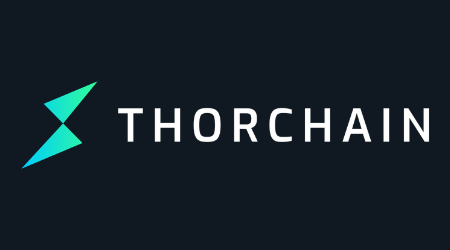As decentralized finance has gained popularity over the last few years, there are now lots of ways to put your assets to work. In this guide, we’ll walk you through some of the most popular options to show you how to earn cryptocurrency if you’re already holding it.
What is crypto earning?
Crypto earning is a way to put your digital assets to work to passively grow your holdings.
The simplest way to do this is to deposit your assets into an eligible exchange account or use a specialized lending service. If you’re more experienced with crypto, you can also use a personal wallet to access blockchain-based services to generate yield, but this tends to come with a higher risk.
Potential earnings vary widely depending on the method used, with riskier options known for offering rates north of 20% APY.
In a period of low-interest rates and high inflation, crypto earning offers an alternative to traditional savings accounts — but it’s not without some unique risks.
How to earn crypto
There are seven main ways to earn cryptocurrency:
1. Staking
Staking cryptocurrency is the process of locking up your assets in a smart contract to assist a network with verifying transactions. It’s a way of getting involved in the fundamental operation of a blockchain without requiring significant capital. Most modern blockchains have replaced mining with staking because it’s more environmentally friendly.
By lending your crypto to the blockchain, you become eligible to receive freshly minted coins (known as block rewards) and a portion of transaction fees. Potential earnings are determined by the number of other people staking, validator performance and network congestion.
Staking can be performed through eligible exchanges and wallets or through a service like Lido.
Crypto platforms that support staking
Finder Score for crypto exchanges
To make comparing even easier we came up with the Finder Score. Supported coins, account fees and features across 28 cryptocurrency trading platforms are all weighted and scaled to produce a score out of 10. The higher the score, the better the exchange—simple.
2. Crypto savings accounts
Crypto savings accounts work by holding or locking up your assets in return for receiving a fixed or variable reward rate. Many major crypto exchanges now offer this type of yield-bearing product, which is often marketed as an “earn account.”
Some platforms also allow you to deposit US dollars or other fiat currencies, typically by converting them into stablecoins, so you can earn yield without owning crypto first.
But unlike a high-interest account held with your bank, crypto savings accounts tend to come without safety nets. Very few account providers offer insurance in the event of your funds being compromised.
3. Crypto debit cards
Crypto debit cards are one of the most accessible crossroads between traditional finance and cryptocurrency. They work just like any other Visa or Mastercard, except that they can be loaded up with crypto and used at supported merchants across the world.
Crypto cards often come with a set of unique rewards to incentivize spending, often in the form of crypto cashback. For example, Crypto.com’s debit card offers a variable cashback rate in the form of CRO on eligible purchases, as well as Spotify and Netflix subscription rebates depending on your card tier and staking level.
4. Lending
Crypto lending is the process of lending crypto or fiat currency to borrowers on an eligible exchange or specialized lending service. Lenders deposit their cryptocurrency into a shared pool that borrowers can access, usually by posting collateral.
As the loan is paid back, lenders earn a percentage of the interest repaid by the borrower, which varies based on the loan size, how much collateral is in the pool and the asset being borrowed.
There are unique risks involved for both lenders and borrowers, so read our guide below to weigh these up first.
5. Yield farming
Yield farming is one of the most advanced options for earning crypto and isn’t suitable for everyone. It involves locking your cryptocurrency in a DeFi protocol that uses an automated market maker (AMM) to provide liquidity for users who want to trade or borrow assets.
Liquidity providers earn a share of the transaction fees generated by the protocol. Many platforms also issue bonus tokens as extra incentives.
Experienced liquidity providers often move liquidity between high-yield pools to take advantage of market movements and maximize returns. There are even applications and algorithms that can do this automatically, known as yield aggregators.
Higher earnings may be possible with yield farming, but it’s also a much higher risk strategy, so read our full guide first.
6. Mining
Mining is the process of high-powered computers solving complex mathematical problems to verify transactions on the blockchain. In return, miners receive a portion of cryptocurrency, sometimes called a block reward, along with transaction fees.
Mining popular coins like Bitcoin requires a hefty investment, as the computational power required to earn a decent return can’t be achieved with a personal computer. For this reason, it’s no longer a viable way to earn crypto for most people.
Certain blockchains like Monero and Ravencoin use algorithms designed to resist large mining farms, allowing users with capable graphics processing units (GPUs) to still participate profitably.
7. Earn free crypto
There are also plenty of ways to earn free crypto without using your existing assets. You might have already heard of popular options like play-to-earn (P2E) games, crypto airdrops, using a dedicated browser extension like Brave or completing surveys, but there are plenty of others.
It’s worth keeping in mind that most ways to earn free crypto are less profitable than the options we’ve listed above, and the space is particularly susceptible to scams.
Know the risks
Putting your crypto to work to earn generous passive returns may sound appealing, but it’s not without risks. Make sure you fully understand them before placing your assets into any kind of crypto-earning product.
- No CDIC protection. The Canada Deposit Insurance Corporation guarantees eligible assets up to $100,000, but crypto savings accounts and other earning protocols aren’t covered. In the event that your digital assets are lost or stolen, you could lose your capital. Some popular crypto platforms, like MEXC and Coinbase, have introduced insurance funds to mitigate this risk, but it often doesn’t apply to earning accounts — so read the fine print.
- Counterparty risk. Entrusting your funds to any third-party platform — no matter how reputable — puts you at risk of loss. In the event of hacking, theft or platform insolvency, you’re unlikely to be able to recover assets held on an exchange or in an earning account.
- Market volatility. Cryptocurrency is volatile and unpredictable. Many earning protocols require you to lock up your crypto for a fixed period, so if the price of your cryptocurrency drops, you risk losing some or all of your capital. Stablecoins — cryptocurrencies pegged to an underlying asset like the US dollar — are often used by crypto-earning products to help shield against some of this volatility.
- New technologies. Smart contracts are what make earning with crypto through staking, lending and yield farming possible. However, they’re still a relatively new piece of tech that’s vulnerable to bugs and hacking. Insecure smart contracts are nearly always the point of attack for bad actors, and in the past, this has seen millions in locked-up tokens stolen.
- Tax may apply. Many crypto investors are unaware that buying, selling and trading assets might be a taxable event. This applies to most crypto-earning methods, too. Crypto tax is complex, so seek professional advice, read our guide to cryptocurrency tax in Canada and defer to the CRA for the latest information.
Watch out for scams when earning crypto
The growing popularity of legitimate ways to earn cryptocurrency has seen a simultaneous rise in scams.
Be wary of new platforms that offer “too-good-to-be-true” rates, like 1,000x returns. Although a select few may be credible, many are “rug pull” scams where the developers abruptly shut down the platform to steal deposited assets.
Perform due diligence on any platform you plan on using — but especially those offering unbelievably high APYs — and stick to protocols with a large userbase and reputable track record.
Bottom line
There are now several ways for crypto holders to put idle digital assets to work, earning a return. But while rates may be high, crypto-earning products aren’t as well regulated as traditional bank accounts and there’s no CDIC guarantee.
Investors who fully understand the risks and are willing to overlook short-term market volatility may find allocating a portion of assets into a crypto-earning product to be a good way to earn passive income.
The more you research, the better equipped you’ll be to decide if earning a return on crypto is for you, so keep learning with one of our guides below.
Learn more about staking
Learn more about one of the more popular ways to earn a passive income with crypto: staking.
Crypto banking explained
Earn yield on, spend or withdraw loans against your crypto assets with crypto banking.
Crypto mining guides
Mining is no longer profitable for most coins, but it can be a way to earn crypto in some cases.
Frequently asked questions about earning crypto
Sources
Read more on Cryptocurrency
-
7 best crypto staking platforms in Canada
We’ve narrowed down the best crypto staking platforms in Canada.
-
8 ways to earn free crypto in Canada
From “learn and earn” crypto programs to airdrops and staking, check out eight ways to get free crypto.
-
How to stake Tron
Find out how to stake your TRX tokens and how Tron’s delegated proof-of-stake consensus mechanism works.
-
How to stake and earn AAVE
Find out how to leverage AAVE token holdings to earn rewards. Stake in the Aave safety module or provide liquidity to a DeFi protocol.
-
How to stake NEO
NEO staking involves locking up NEO tokens to earn rewards.
-
How to stake and earn Tezos (XTZ)
Find out how to leverage XTZ token holdings to earn interest. Stake in the Tezos blockchain or provide liquidity to a DeFi protocol.
-
How to stake Avalanche
Learn how to stake AVAX tokens and earn rewards by supporting the Avalanche blockchain.
-
How to stake Solana (SOL)
Learn how to stake Solana (SOL) by following a step-by-step guide. Start earning interest on your crypto today.
-
How to stake Theta
Find out how to stake your THETA tokens and how Theta’s multi-BFT proof-of-stake consensus mechanism works.
-
What is staking?
Your guide to crypto staking, the rewards on offer and the risks involved.




